The Armeesattel was introduced in 1925 and remained in service until the end of the war.
Throughout the war small changes were made because some features proofed to be impractical.
Below the Army Saddle M25 with equipment is shown.
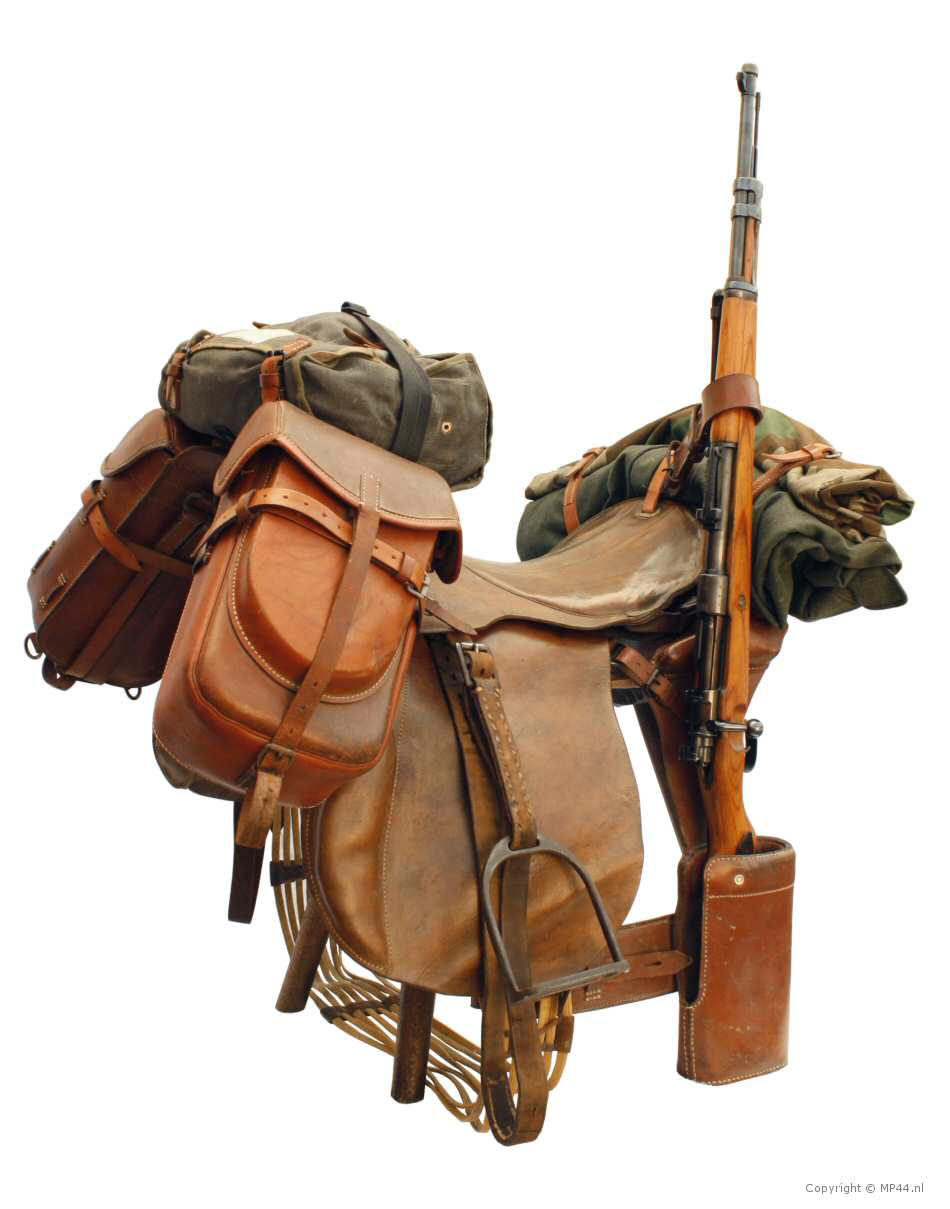
The saddle came in 5 sizes to accomodate different horses.
Below part of the H.Dv. which describes the equipment used for horses
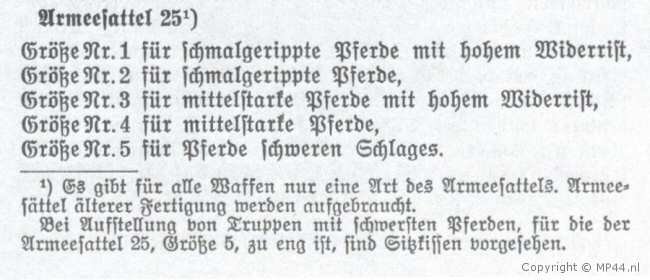
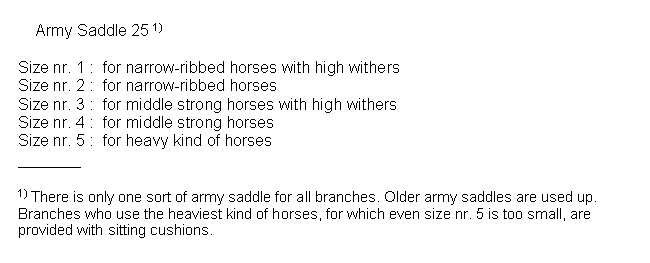
First, the saddle will be broken down in main parts to show all the individual items.
Then the parts will be assembled again until representing a complete saddle.

a) The Army saddle consists of the Saddle tree, the covering and the Equipment.
The Saddle tree (Fig. 2, 2a and 2b), from hardwood,
covered with
clothing, consists of both the trees, the pommel and the cantle
Below the so called saddle tree which forms the base for the saddle.
The saddle tree is made of hardwood, reinforced with linen cloth.
On several places the saddle tree is reinforced with metal strips
Saddle tree (Sattelbaum) (left side)
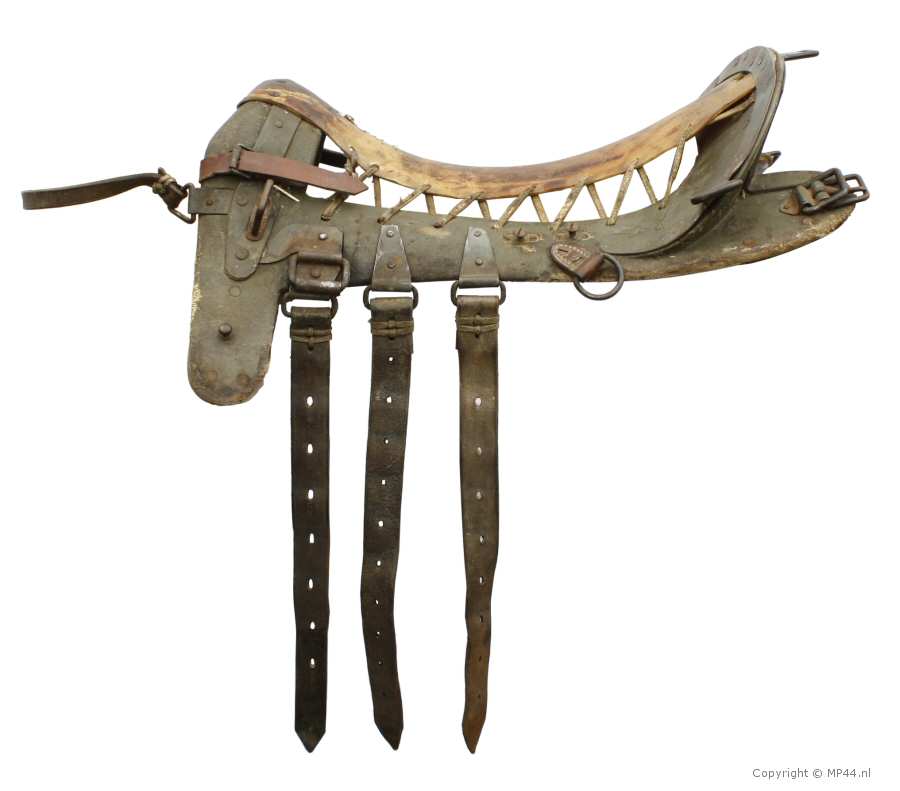
Saddle tree (Sattelbaum) (right side)
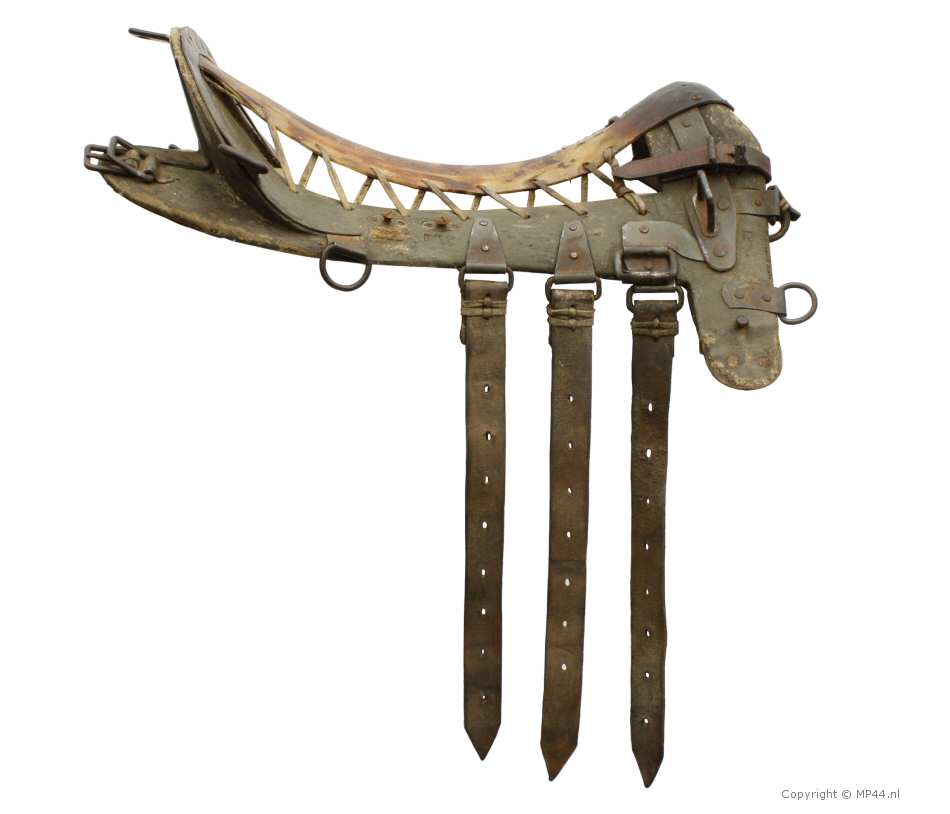
Below, the saddle tree is pictured with letters as indicated in the H.Dv.
On the right, the same letters are used but better readable font.
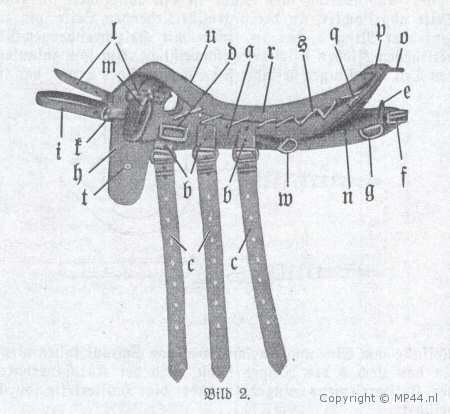
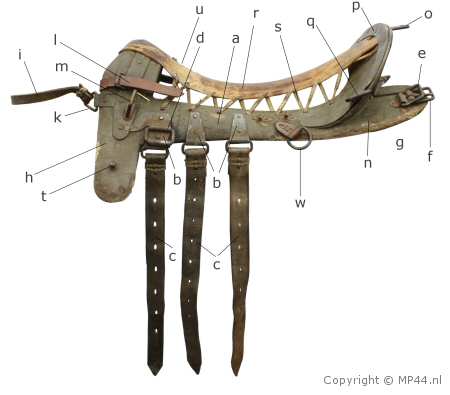
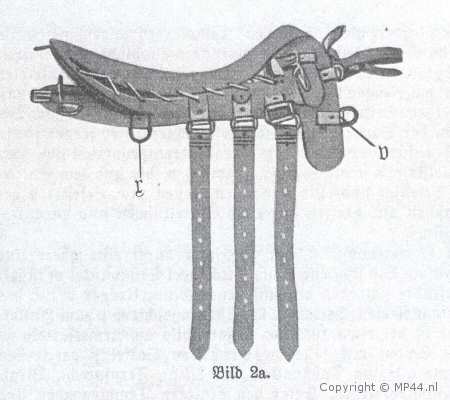
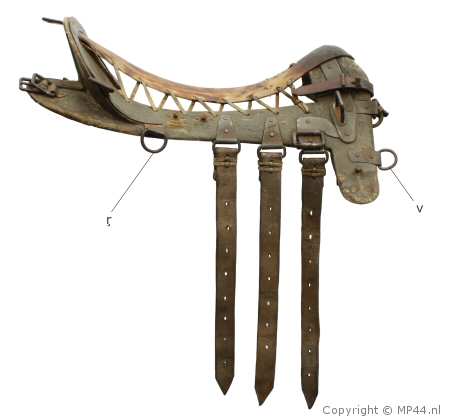
Saddle tree (top view)
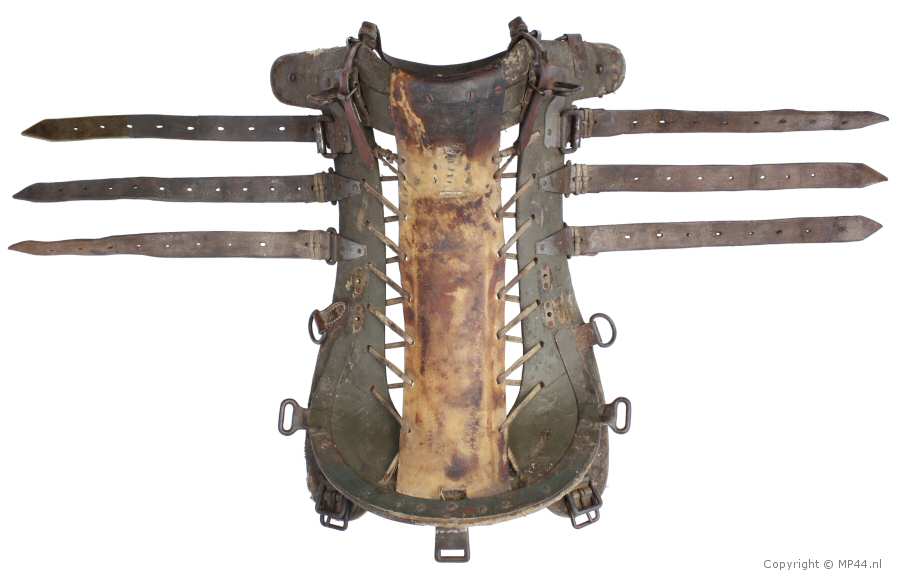
Saddle tree (Bottom view)
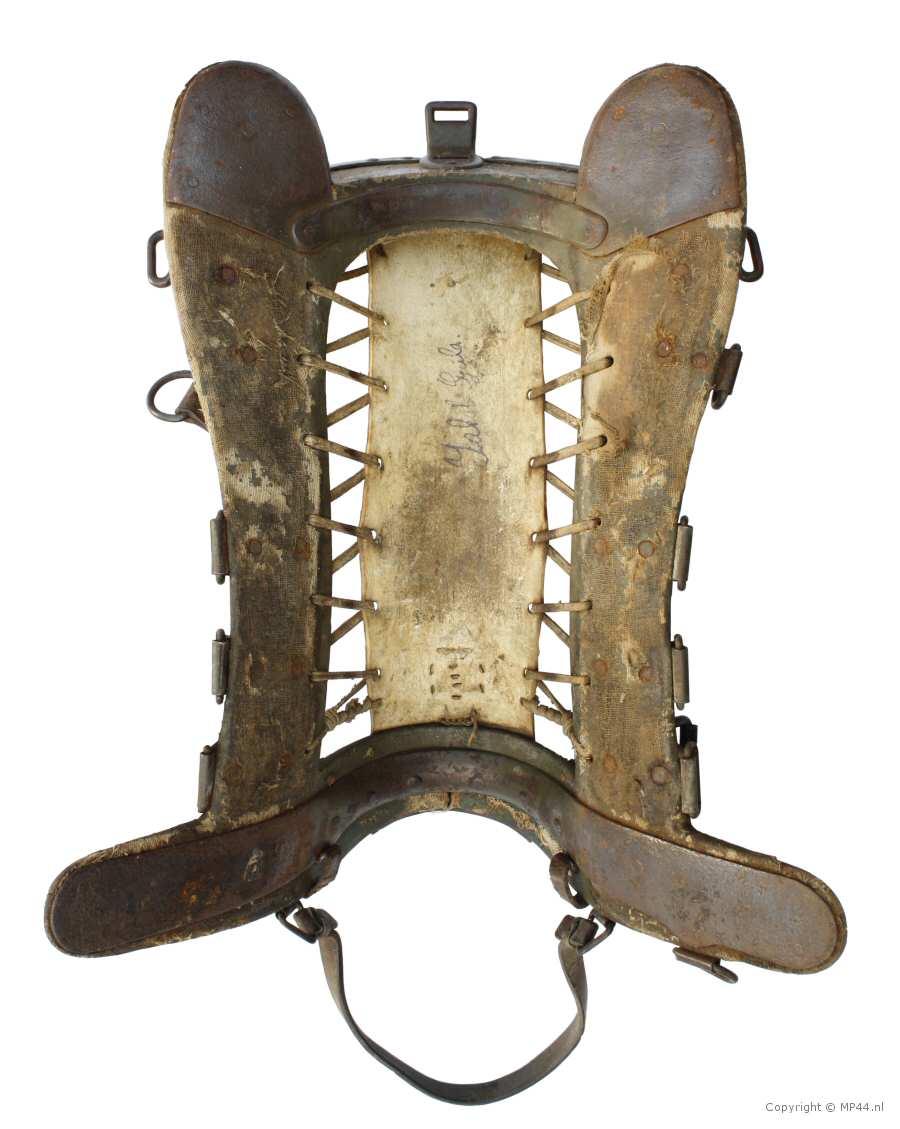
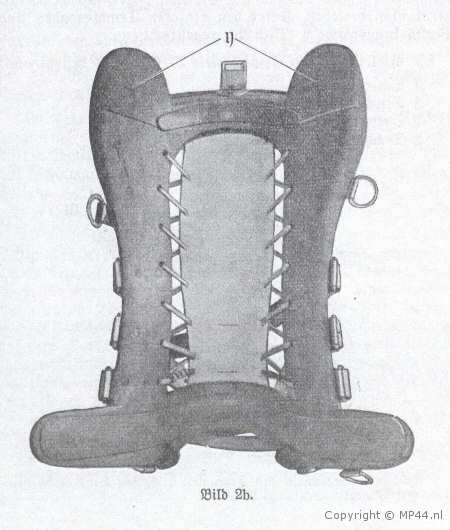
On the left, picture 2b from H.Dv. 476/2 which shows the underside of the saddle tree with reinforcing metal plates (n)
H.Dv. text
Die Trachten (a) sind geschweift und mit Schnurlöchern zum Befestigen des Sitzriemens versehen.
An den beiden Seiten sind je drei Ringen mit Öse (b) für die Sattelgurtstrippen (c) mit Schnalllöchern für den Sattelgurt aufgenietet.
Vorn, zu beiden Seiten der Trachten, befindet sich je ein beweglicher viereckiger Ring mit Rolle und Nietblech (d) für die Steigriemen,
hinten beiderseits ein Packring (e) für die Seitenpackriemen und zum Befestigen der Karabinertragevorrichtung.Auf der linken Seite ist ein halbrunder Ring mit Lederöse (w) für den Schnallriemen der Karabinertragevorrichtung,
auf der rechten Seite ein halbrunder Ring mit Öse (ŗ) (Bild 2a) zum Befestigen der Säbeltasche angebracht.An den hinteren Enden der Trachten befindet sich je ein halbrunder Ring (g)*, außerdem je eine Schnalle ohne Rolle zum befestigen der Hinterzeugstrippen sowie vorn auf dem Sitzriemen eine Schlaufe (u) für das Vorderzeug.
* Bei Neufertigung von Sattelbäumen fallen diese (g) fort.
Der Vorderzwiesel (h), dessen Kammer zurückgeschnitten ist, wird durch eine äussere und eine innere Stahlschiene verstärkt; er trägt vorn einen Aufhängeriemen (i) in zwei angenieteten dreieckigen Ringen (k) und rechts ein Ausbindering (v) (Bild 2a)
An beiden Seiten ist je eine Schnallvorrichtung (l) zum Befestigen der Satteltaschen und der Trachtenkissen, ferner je ein Knopf (t) für den Steg der Karabinertragevorrichtung bzw. Vorgurtstrippe sowie je eine Kramme (m), die auf dem Sattelbaum befestigt sind.
Die Krammen dienen zum Befestigen der Packtaschen und greifen durch die Satteltaschen und durch den Sattelsitz.
Am Hinterzwiesel (n), der ebenfalls durch eine obere und eine untere Stahlschiene sowie durch zwei Stützwinkel verstärkt ist, befindet sich oben ein stählernen Mantelträger (o) für den Mittelpackriemen.
Die obere Verstärkungsschiene (p) zum Hinterzwiesel ist bei etwa 10% des Gesamtsolls an Armeesätteln zu beiden Seiten mit je einer durch den Sattelsitz greifenden Kramme (q) 1 zum Anschnallen von Meß-, Fernsprech-, Blinkgerät usw. versehen.
1 An den Armeesätteln mit Krammen (q) dürfen keine Karabinertrage-vorrichtungen angehängt werden.
Unter den hinteren Trachtenenden sind Verstärkungsbleche (n) (Bild 2b) angebracht.
Translation of the manual
The tree pieces (a) are curved and provided with eyelets for attaching the seat strap.
On both sides, three rings with eyelets (b) for the girth straps (c) with buckle holes for the girth are riveted on the tree.
In the front, at both sides of the tree, is a moving square ring with roller and riveted sheet (d) for the stirrup,
rear on both sides a packing ring (e) for the side packing straps and for fixing the carbine carrying device.On the left side is a semicircular ring with leather eyelet (w) for the leather straps of the carbine carrying device,
on the right side a semicircular ring with eyelet (ŗ) (Fig. 2a) to secure the sword bag.At the rear ends of each tree is a semi-circular ring (g)*, also on each side is a buckle without roller to fix the complete back strap, as well as a leather loop (u) in front on the seat strap for the front straps.
* With new manufacturing of saddle trees these rings (g) are discontinued.
The front pommel (h), whose chamber is cut back, is reinforced by an outer and an inner steel rail; it carries on the front a hanger strap (i) in two riveted triangular rings (k), and on the right a Ausbindering (v) (Fig. 2a)
On each side is a strap-on device (l) for attaching the saddle skirts and tree padding, furthermore also on each side a button (t) for the bridge strap of the carbine carrying device or the front girth strap as well as a fastener (m), which are mounted on the saddle tree.The fasteners are used for attaching the packing bags (M34 Saddlebags) and grab through the saddle skirts and the saddle seat.
Above cantle (n), which is also reinforced by an upper and a lower steel rail and by two support brackets, a steel shroud support (o) is located for the middle packing strap.
10% of the total amount of army saddles has a fastener (q) 1 installed on both sides on the upper reinforcement strip (p) of the cantle which runs through the saddle seat for strapping on measuring-, communication-, or optical equipment.
1 On the army saddles with fasteners (q), carabine carrying devices may not be used.
Under the rear end of the saddle tree, metal reinforcing plates (n) (Fig. 2b) are installed.
Next, the Saddle Pads (Trachtenkissen), Saddle Skirts (Satteltaschen) and Saddle Seat (hshs) are shown.
Also the steps are shown how these parts are installed on the Saddle Tree (Sattelbaum)
Saddle pads (Trachtenkissen)
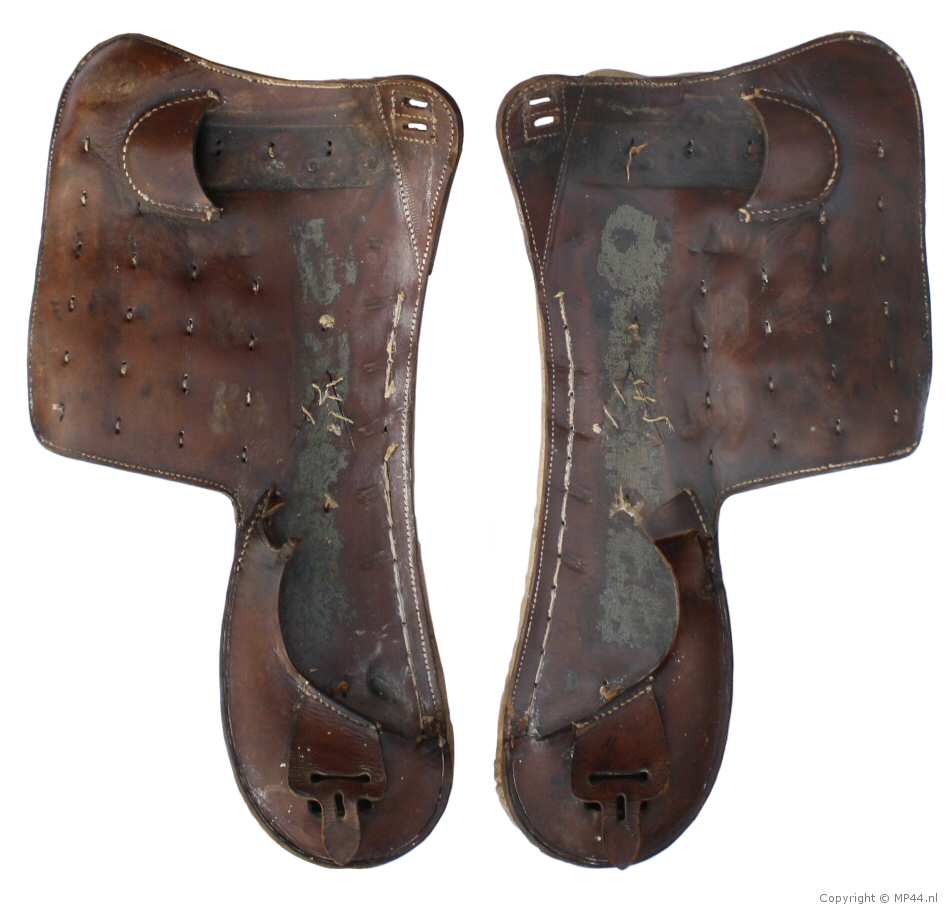
Saddle Pads (Trachtenkissen) bottom view
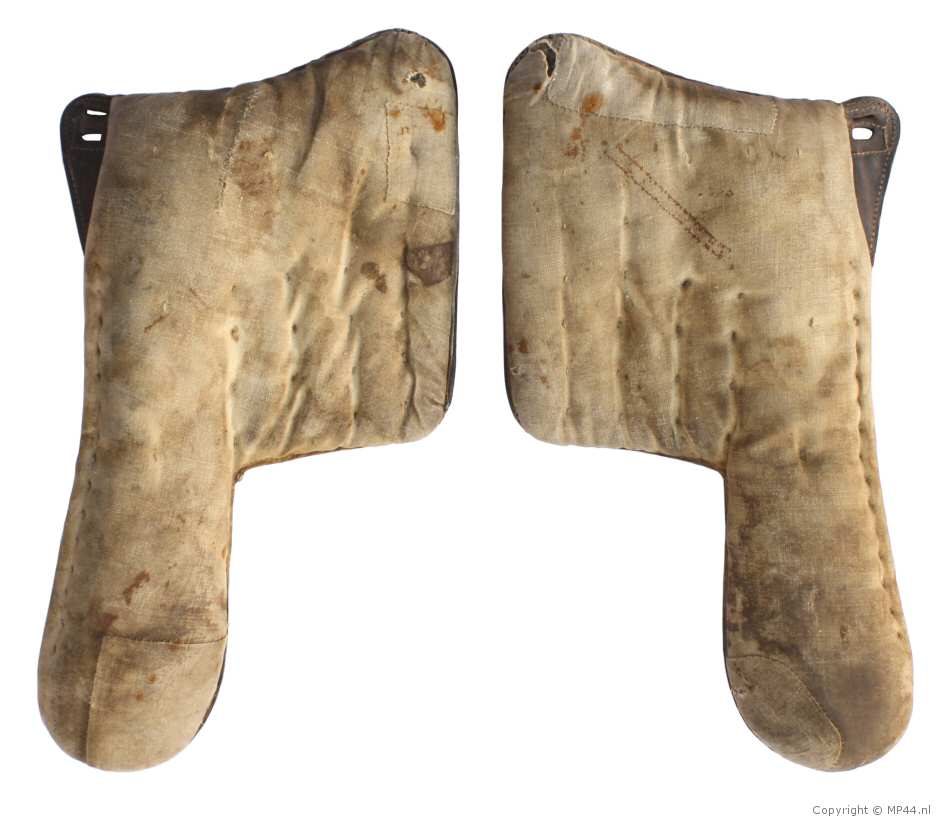
Saddle tree with Saddle pads (left side)
Sattelbaum mit Trachtenkissen (linke Seite)
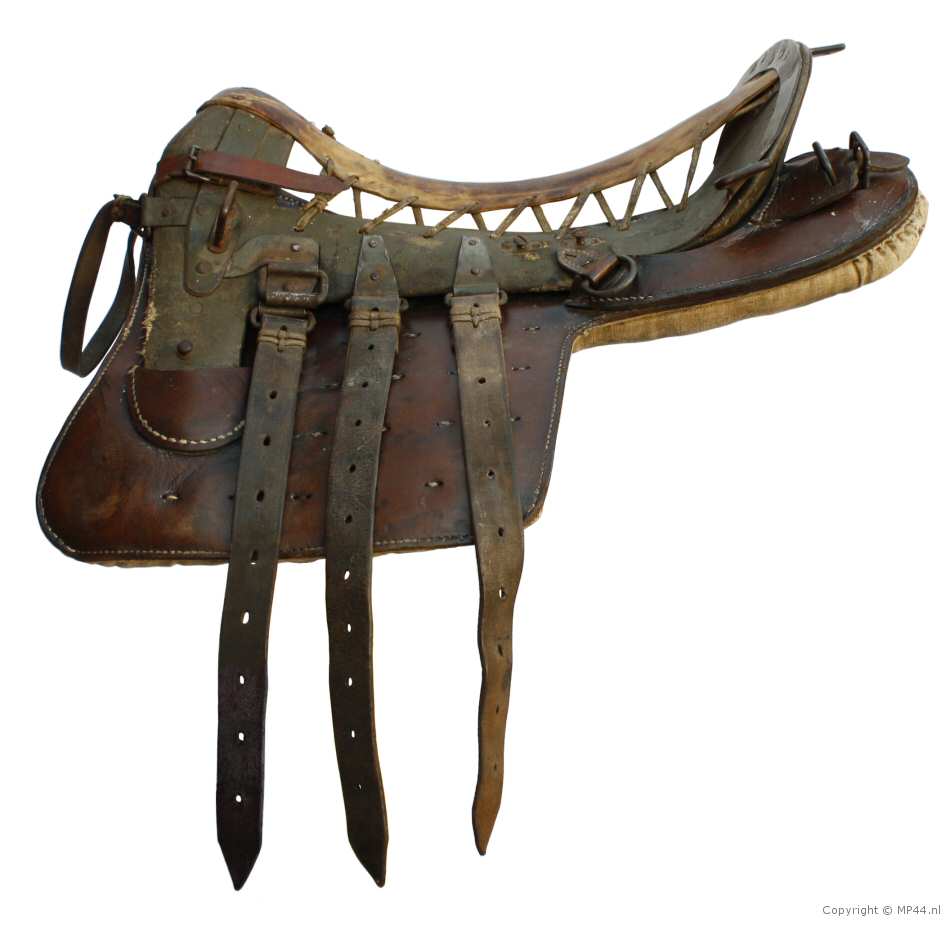
Saddle tree with Saddle pads (right side)
Sattelbaum mit Trachtenkissen (rechte Seite)
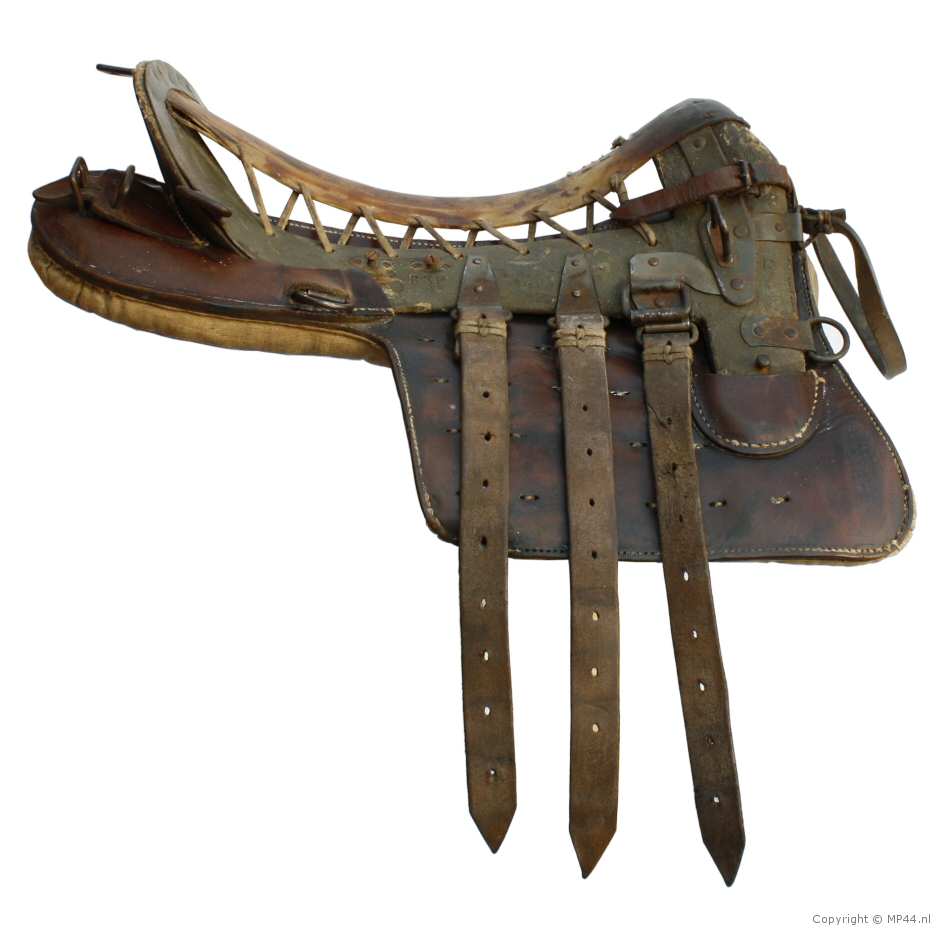
Next, the Saddle skirts (Satteltaschen) are installed
(note: the german phrase Satteltaschen is not to be confused with the Saddle Bags (Packtaschen) )
Saddle Skirts (Satteltaschen)
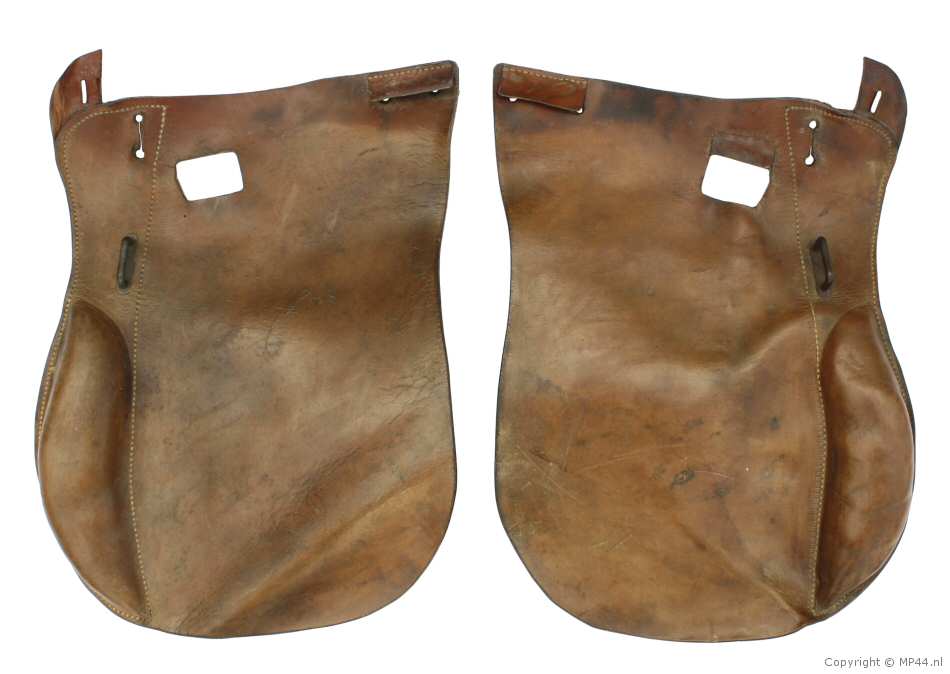
Saddle Skirts (Satteltaschen) (back side)
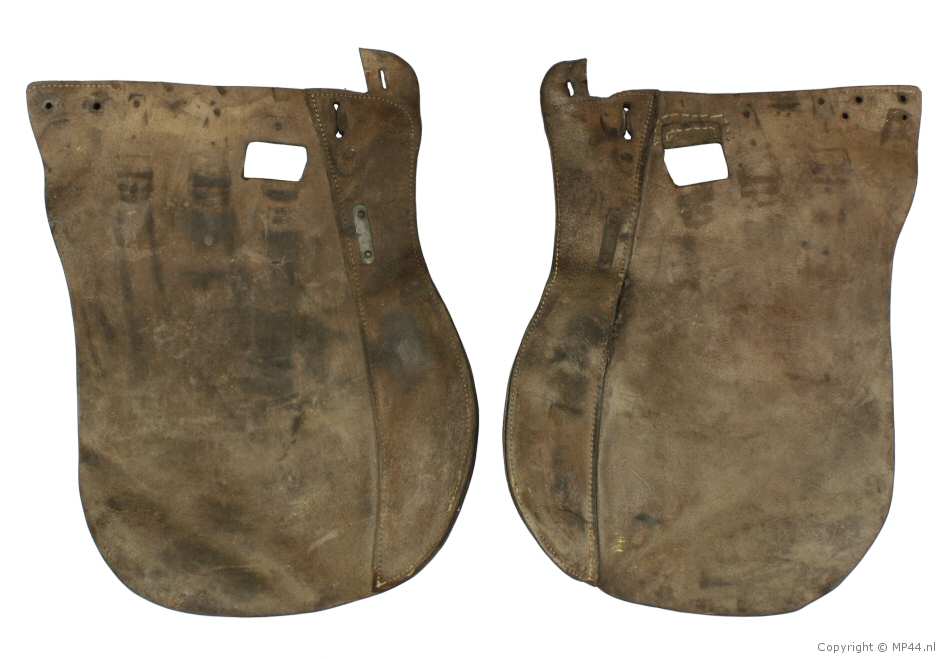
Saddle skirts installed on saddle tree (left side)
Sattelkissen auf Sattelbaum (linke Seite)
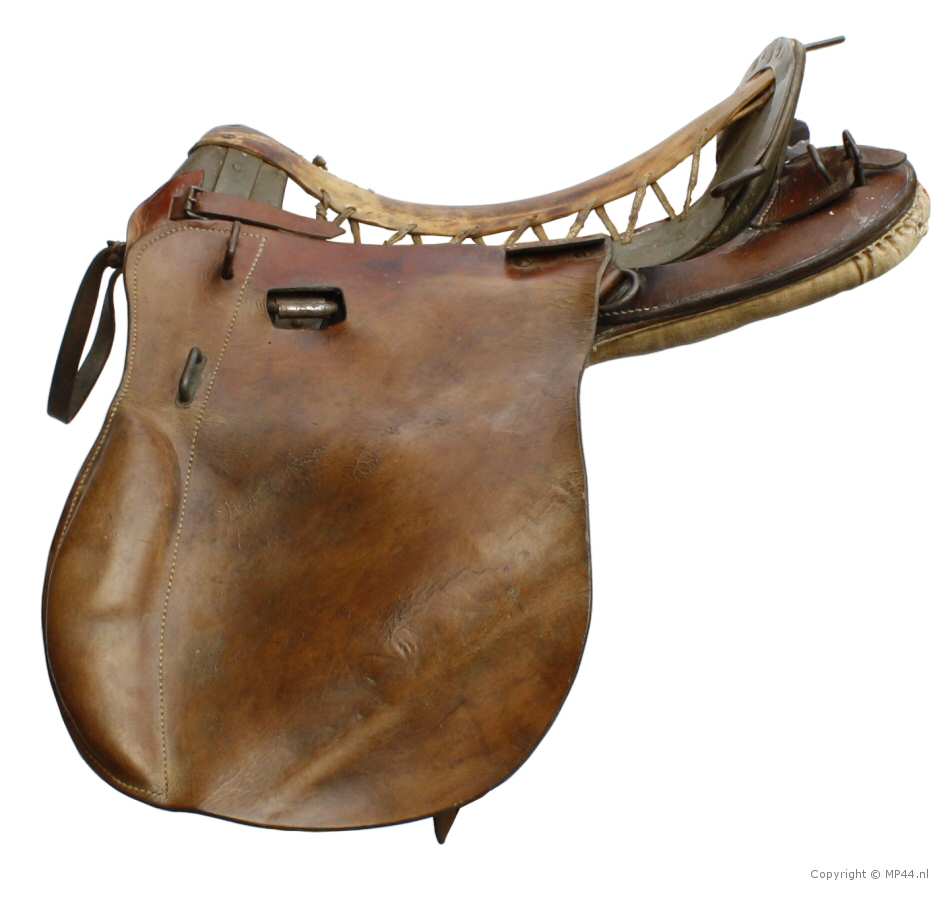
Saddle skirts installed on saddle tree (right side)
Sattelkissen auf Sattelbaum (rechte Seite)
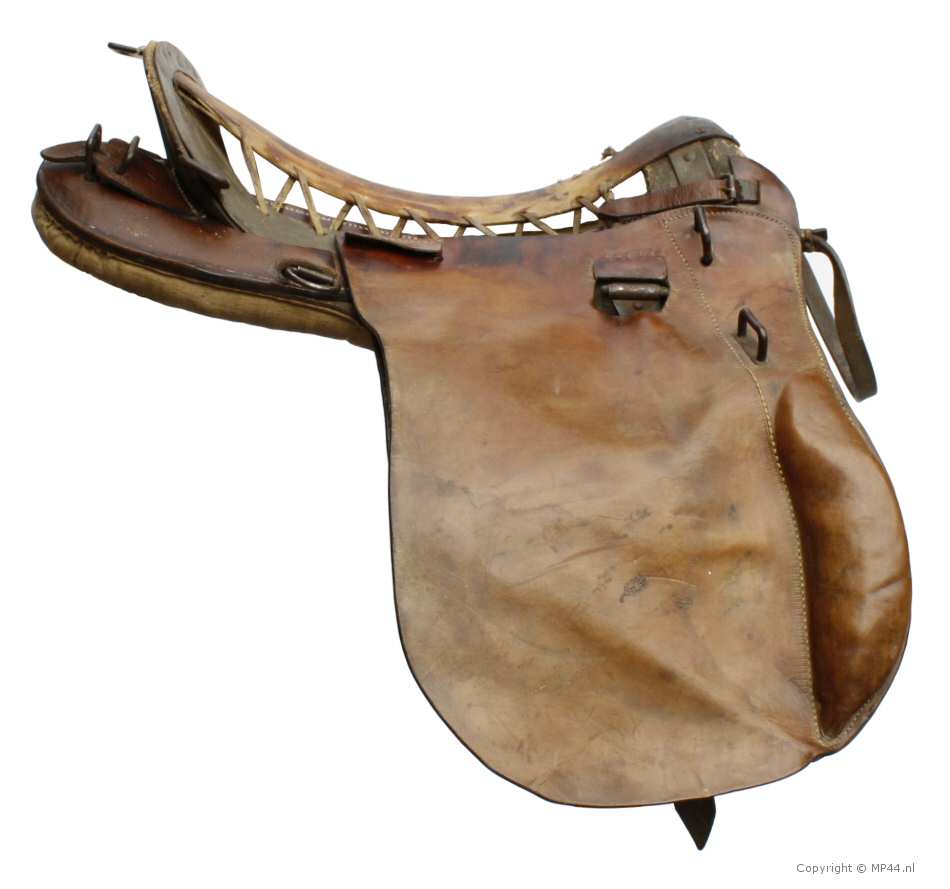
And to complete the basic saddle, the saddle seat (Sattelsitz) is installed
Saddle Seat (Sattelsitz) top view
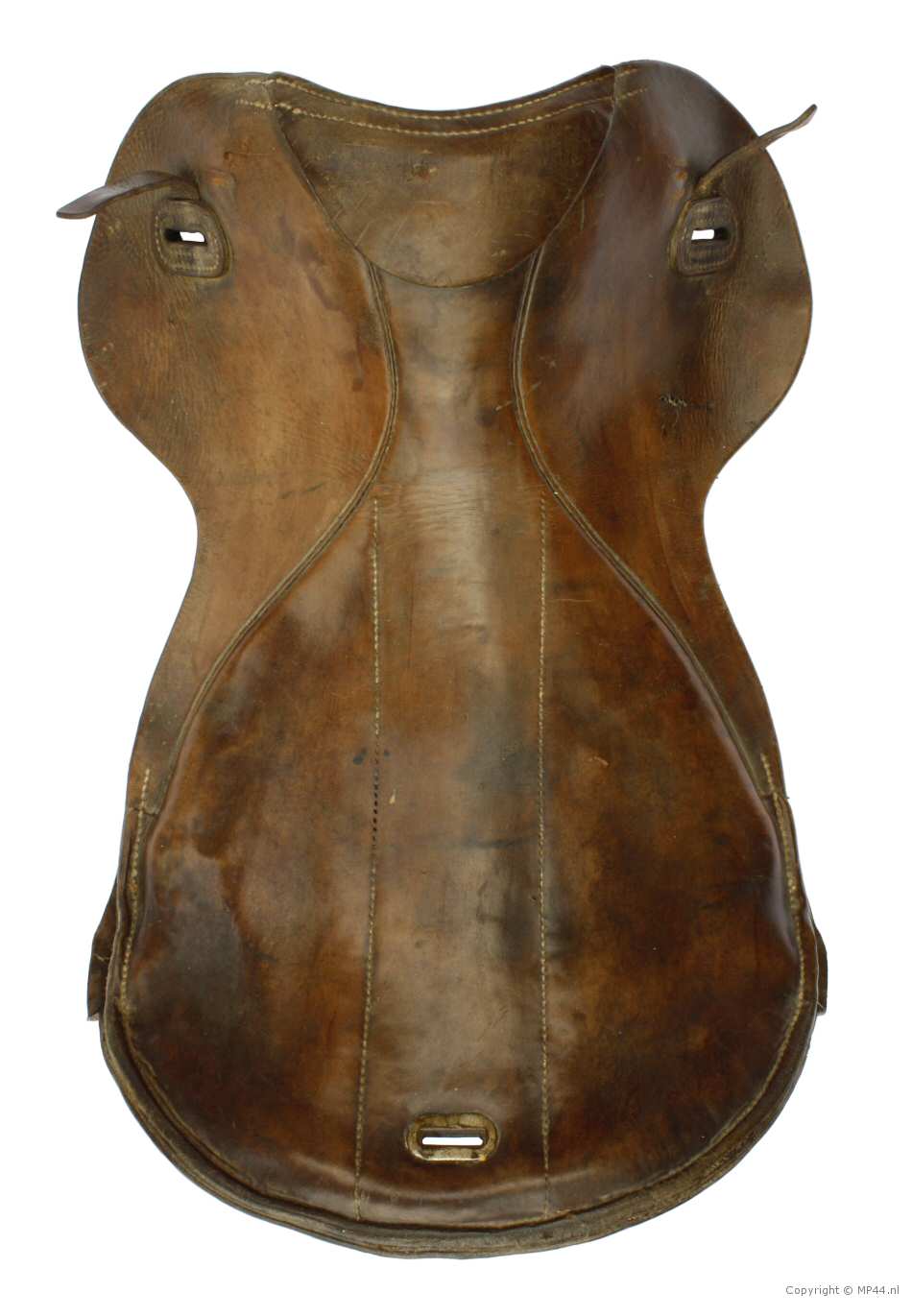
Saddle Seat (Sattelsitz) bottom view
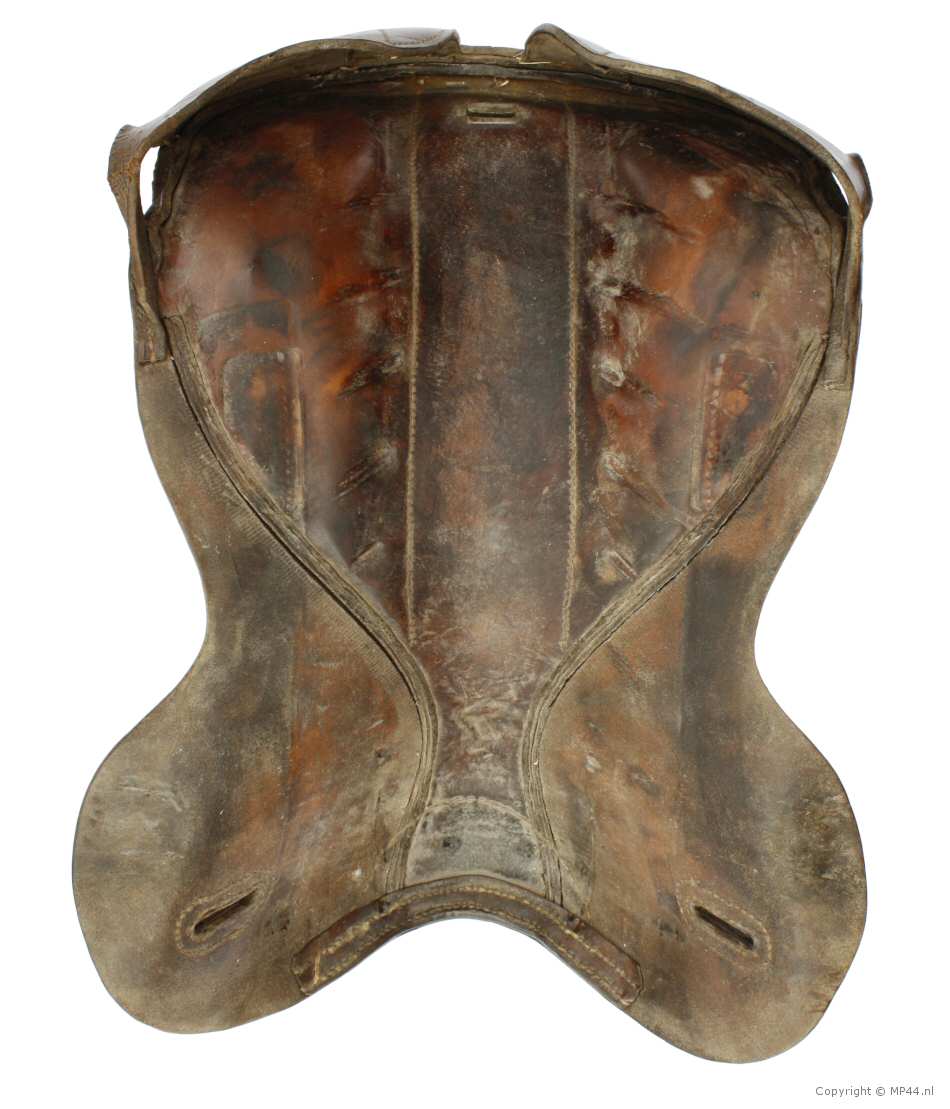
Saddle seat (Sattelsitz) rear side
On this side the maker mark, size and Waffenamt stamp can be found
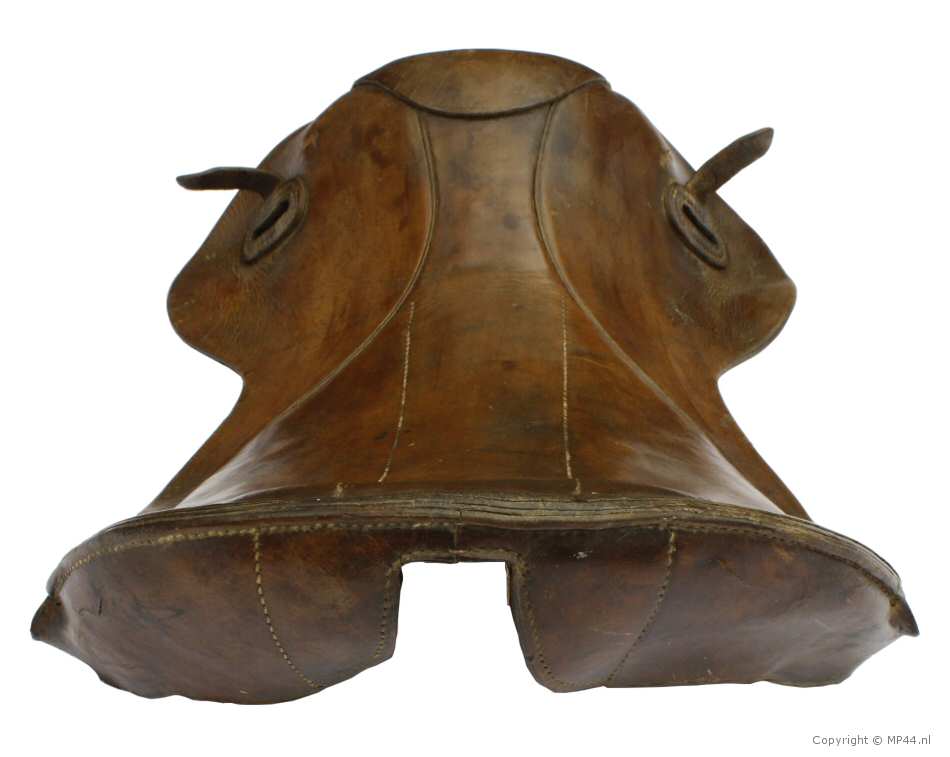
Saddle Seat installed on Saddle tree (left side)
Sattelsitz auf Sattelbaum (linke Seite)
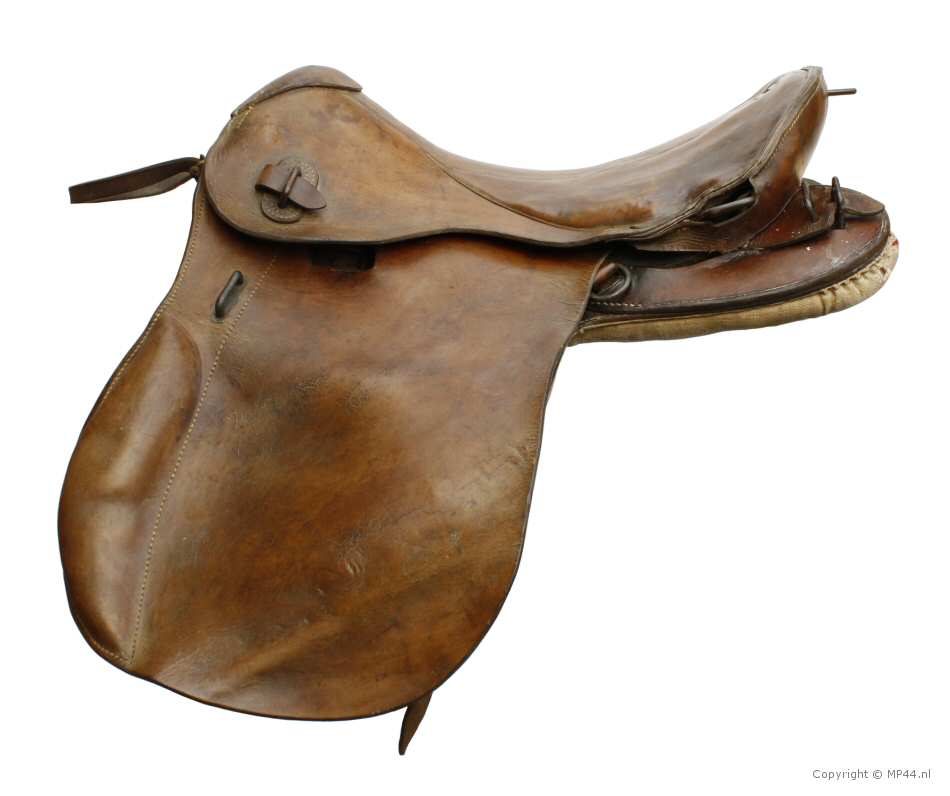
Saddle Seat installed on Saddle tree (right side)
Sattelsitz auf Sattelbaum (rechte Seite)
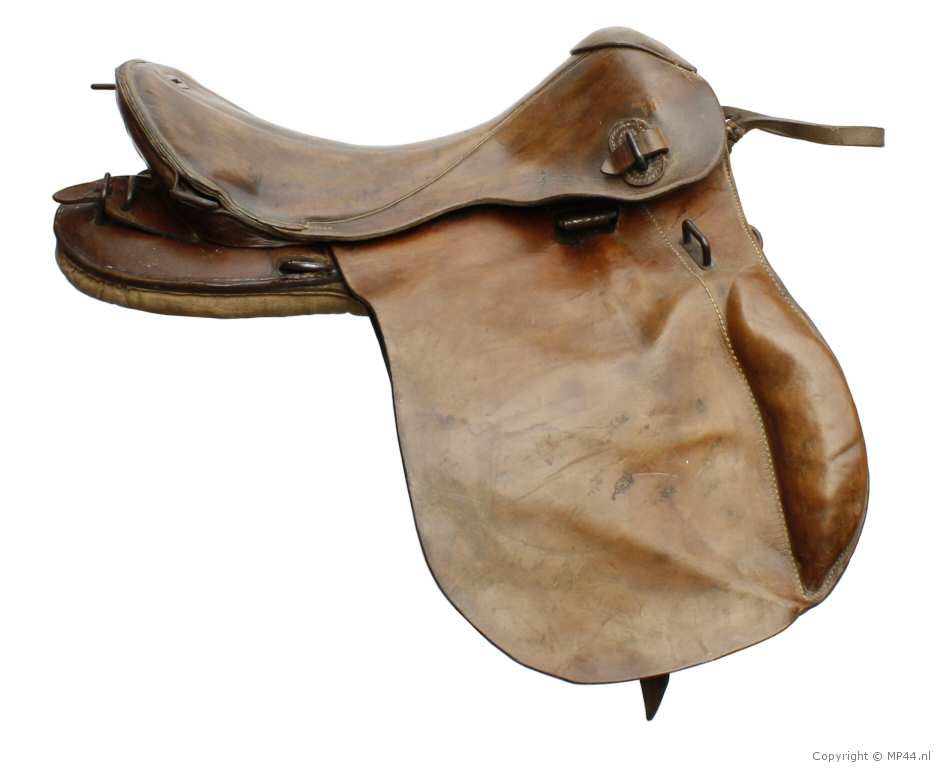
Below left, the complete basic saddle from the manual
and again on the right with a more readable font
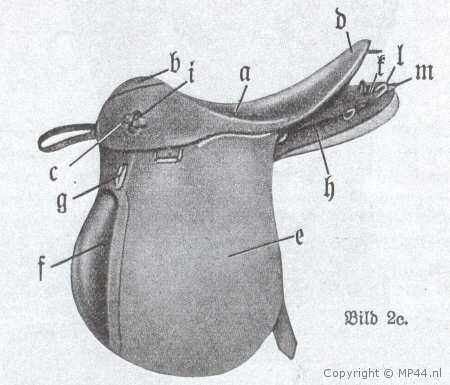
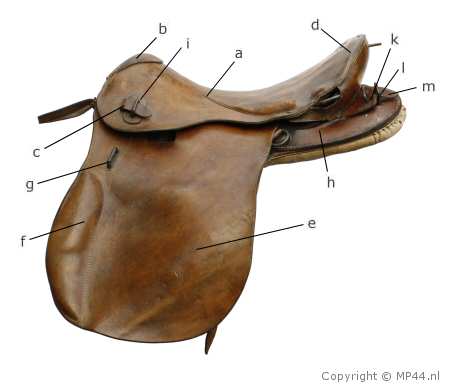

The covering of the Army saddle 25 (Fig. 2c) consists of :
1 Saddle seat
1 Seat strap
2 Skirts
2 Saddle Pads
Der Sattelsitz (a) (Bild 2c) liegt auf dem Sattelbaum, hat vorn in der Mitte des Oberteils eine über die Seitennähte greifende Lederlappe (b) und auf den beiden seitlichen Teilen je einen Einschnitt mit einem Verstärkungsstück und einen Vorsteckriemen (c), durch den die Krammen des Vorderzwiesels (i) greifen.
Hinten, in der Mitte des Oberteils (im Sitz), befindet sich ein Schlitzblech (d) für den Mittelpackriemen.
Der Sattelsitz ist auf beiden Seiten mit Filzeinlagen versehen.
Die Satteltaschen (e) sind etwas nach vorn gestellt; sie haben Kniepauschen (f) und sind mit ihren oberen hinteren Teilen mit Schrauben an die Trachten befestigt.
Über den Kniepauschen ist eine Kramme (g) zum Befestigen der Packtasche aufgenietet.
Der Unterbelag der Kniepauschen setzt sich über den oberen Rand der Satteltaschen in einen Ansatz mit einem Einschnitt fort, durch den die Schnallriemen, die zum Befestigen der Satteltaschen auf dem Sattelbaum dienen, durchführen.
Außerdem sind die Satteltaschen mit viereckigen Ausschnitten für die am Sattelbaum befestigten Ringe zur Aufnahme der Steigriemen versehen.
Die Befestigung des Sitzriemens (Bild 2), aus Transparantleder, auf dem Sattelbaum erfolgt an den Trachten mit Schnürriemen (s), an dem Vorderzwiesel mit Schrauben und am Hinterzwiesel in Verbindung mit der Sattelschiene durch Nieten.
Der tiefste Punkt des Sitzriemens ist zwischen dem 3. und 4. Schnürloch der Trachten von vorn gerechnet.
Die Trachtenkissen (h) (Bild 2c) sind mit Wolle gepolstert.
Jedes der beiden Kissen hat vorn und hinten einen Lederschuh für die Enden des Vorderzwiesels und der Trachten.
Vorn an der oberen Ecke jedes Kissens ist ein Lederstück mit je zwei Einschnitten zum Durchziehen der Schnallvorrichtungen an dem Vorderzwiesel festgenäht.
An den hinteren Lederschuhen befindet sich je ein Ausschnitt zum Durchführen des Packringes und der Schnalle zum Einschnallen der Hinterzeugstrippe, außerdem je ein Lederstück mit Ausschnitt und Strippe (k) zum Festlegen der Schnalle für die Hinterzeugstrippe.
Am Trachtenschuh des rechten Trachtenkissens ist ein Ausschnitt zur Durchführung des Ringes für den Säbelträger angebracht.
The saddle seat (a) (Figure 2c) lies on the saddle tree, has a leather piece (b) which is on the front centred of the upper part and crosses over the side seams, and on the two lateral sides a recess, with a reinforcing piece and a pommel-pad strap (c), which are run through by the fasteners (i) of the pommel.
Back, in the centre of the top (of the seat), there is a slotted plate (d) for the middle pack strap.
The saddle seat is equipped on both sides with felt inlays.
The saddle skirts (s) are fixed somewhat to the forefront; they have padded knee rolls (f), and are fastened with their upper rear parts to the saddle trees with screws.
Over the knee rolls one fastener (g) is riveted on for securing the saddle packing bag.
The inside lining of the knee rolls is continued over the upper edge of the saddle skirts in an upper flap with an incision, through which the leather straps, which are used to attach the saddle skirts on the saddle tree, are pulled through.
In addition, the skirts are provided with rectangular cut-outs for the rings attached to the saddle tree which accommodates the stirrup straps.
The fastening of the seat belt (Fig. 2), from transparent leather, on the saddle tree is fixed to the saddle tree element by laces (s), to the pommel by screws, and to the cantle in combination with the seat rail by rivets.
The lowest point of the seat belt is between the 3rd and 4th eyelet of the saddle tree counted from the front.
The saddle tree pad (h) (Fig. 2c) are upholstered with wool.
Each of the saddle pads has a leather shoe on the front end and the rear end for the ends of the pommel and the saddle tree.
On the front of the upper corner of each pad, a piece of leather, with two incisions for pulling through the strap-on device of the pommel, is sewn on.
At the rear leather shoes, on both sides there is a cut-out area for putting through the packing ring and the buckle for buckling up the back harness straps, additionally a piece of leather with cut-out and strap (k) for fixing the buckle for the back harness strap.
On the right tree-pad shoe, a cut-out for putting through the ring for the saber carrier is provided.
This concludes the description of the basic Army saddle 25
The rest of the equipment that
completes the saddle (like stirrups, girth, saddle bags etc.)
will be dealt with in another section.